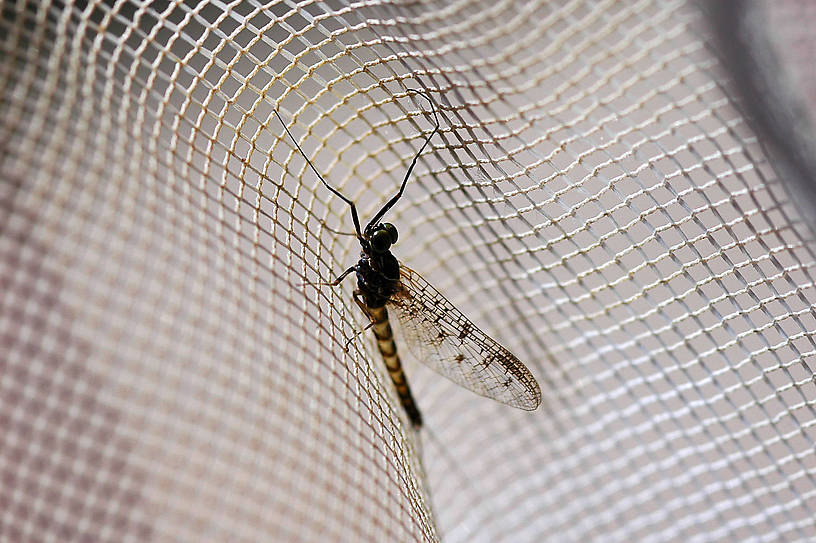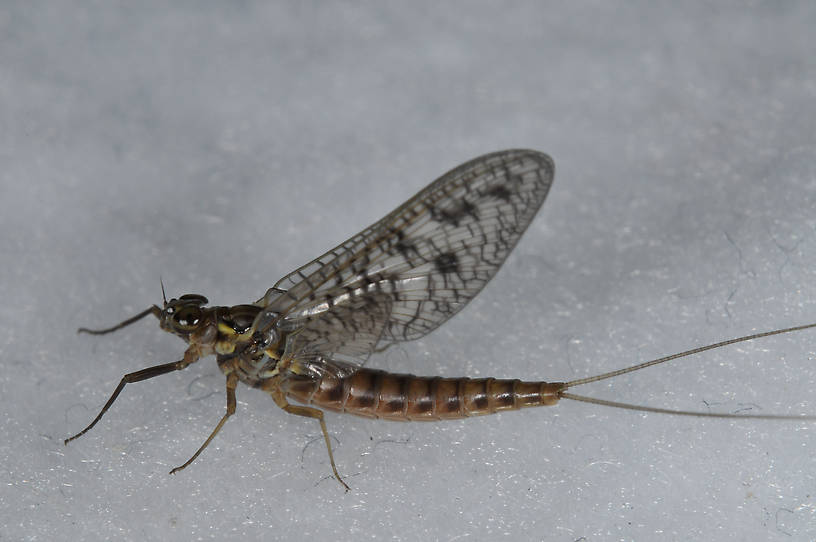
Blue-winged Olives
Baetis
Tiny Baetis mayflies are perhaps the most commonly encountered and imitated by anglers on all American trout streams due to their great abundance, widespread distribution, and trout-friendly emergence habits.


Mayfly Species Ameletus oregonensis (Brown Duns)
Where & when
In 1 records from GBIF, adults of this species have been collected during April (100%).
Species Range
Physical description
Most physical descriptions on Troutnut are direct or slightly edited quotes from the original scientific sources describing or updating the species, although there may be errors in copying them to this website. Such descriptions aren't always definitive, because species often turn out to be more variable than the original describers observed. In some cases, only a single specimen was described! However, they are useful starting points.
Male Spinner
Wing length: 11 mm
Both wings of this species are suffused with brown at the base; genitalia are quite distinctive.
Head and thorax blackish; pleura shaded with paler ruddy tinges. Fore legs deep blackish brown. Middle and hind legs light yellowish brown, the femora largely suffused with reddish brown. Wings hyaline, the costal area faintly amber-tinged at the base. The basal anal region of the fore wing is suffused with sepia brown, the stigmatic region similarly tinged. The whole basal area of the hind wing, extending along the costa half way to the apex, is prominently brown. Longitudinal and cross veins brown; cross veins numerous, those of the stigma anastomosed. Second abdominal tergite suffused with smoky brown; tergites 8-6 semi-hyaline, pale yellowish white; posterior margins, triangles in the postero-lateral corners, and two narrow submedian streaks, dark brown, which in certain lights appears reddish. Tergites 7-9 opaque, similarly marked, but the dark areas blackish brown. Tergite 10 largely brown, the posterior margin pale. Sternites 1-6 semi-hyaline, pale yellowish white; 7-9 opaque, suffused somewhat with brown. Forceps base pale, forceps deep smoky. Penes unique, each composed of a rather wide chitinous piece bearing at its apex three broad spines; penes short, not reaching to the apex of the forceps base (see fig. 117). Tails pale smoky, not darkened at the joinings.
Specimens of the Mayfly Species Ameletus oregonensis
1 Male Spinner
1 Female Spinner
Discussions of Ameletus oregonensis
Start a Discussion of Ameletus oregonensis
References
- Knopp, Malcolm and Robert Cormier. 1997. Mayflies: An Angler's Study of Trout Water Ephemeroptera . The Lyons Press.
- Needham, James G., Jay R. Traver, and Yin-Chi Hsu. 1935. The Biology of Mayflies. Comstock Publishing Company, Inc.
Mayfly Species Ameletus oregonensis (Brown Duns)
Species Range
Common Name
Resources
- NatureServe
- Integrated Taxonomic Information System
- Global Biodiversity Information Facility
- Described by McDunnough (1933)



